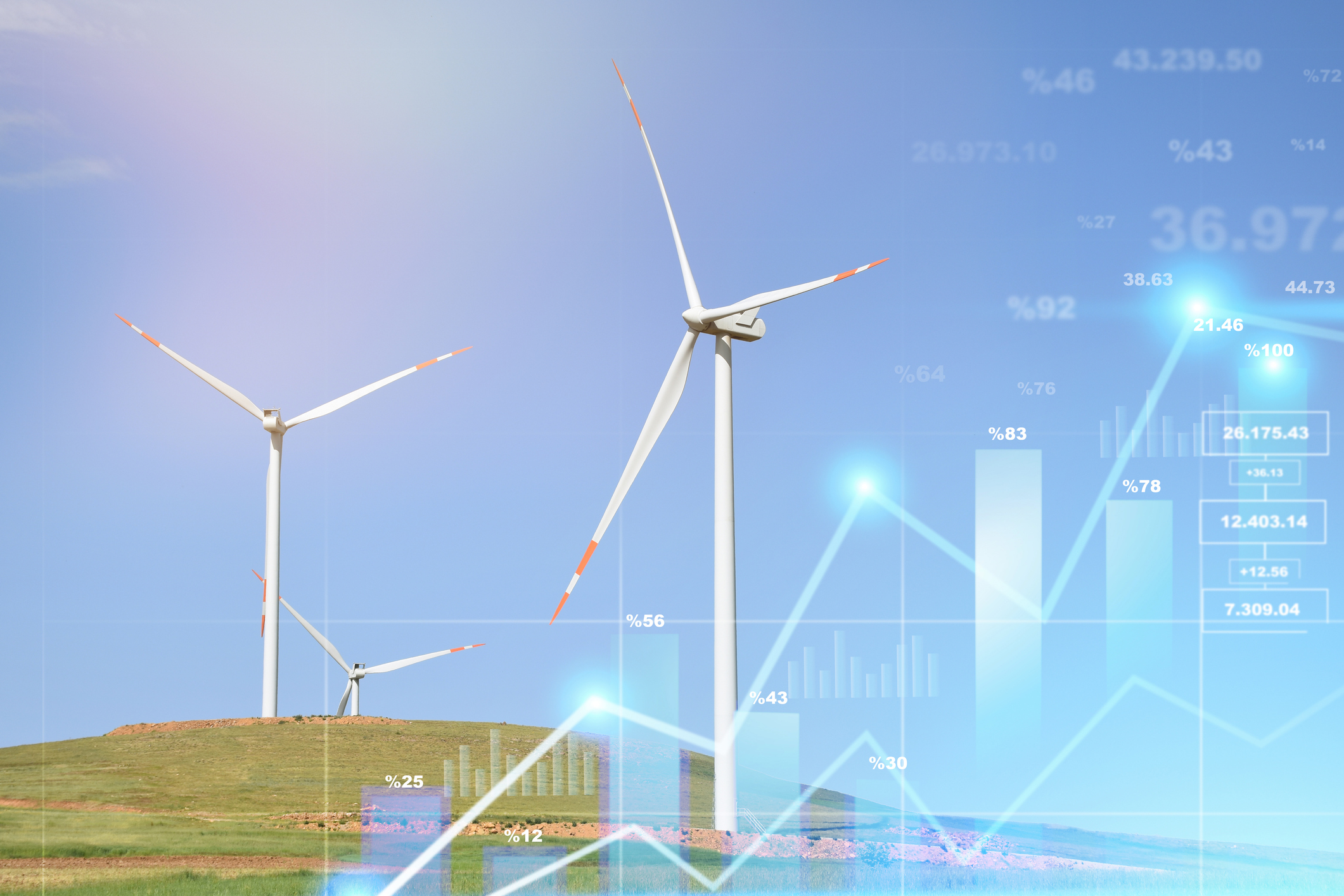From an age of plenty to an age of shortage
We have emerged from the pandemic into a world where supply can’t meet demand, driving prices up. Merryn Somerset Webb looks at what's going on.


Worried about living costs? You aren’t alone. A survey from Aviva suggests that 74% of adults are too. And for good reason. It looks like Covid-19 has somehow shifted us from an age of plenty into an age of shortages, where supply just can’t meet demand and inflation kicks off as a result. Ships can’t get into ports. No one can get their hands on semiconductors (this is why new cars are so expensive). And energy prices are soaring – gas prices have rocketed and oil is well above $80 a barrel.
So what’s going on? Three things, says research group Gavekal. First, overconfidence in the data revolution. The “newfound ability to measure everything” encouraged firms and governments to “optimise” the delivery of services and goods. So supply chains have no slack in a crisis. Second, lousy policy choices. “If governments had not been so vocal about transitioning from carbon to renewables, would [we] be seeing the current surge in energy prices?” Third, a shortage of staff, visible in employment data globally. In the US, the participation rate (the percentage of people prepared to work) keeps falling as well-off older people retire early, fear of Covid-19 keeps people at home, and the gig economy means the young don’t have to commit to long hours in dull jobs. The US “quit rate” is at record levels. In China the working-age population is shrinking, as it has been in Japan and much of Europe for some time. In the UK we have record job vacancies.
The first two can be fixed. Supply chains will be localised and strengthened. And there will be a recognition that pretending we won’t have to rely on fossil fuels for decades to come is silly. The third will take a lot longer to resolve (digitalisation, robots and rising productivity will be the long-term answer). Either way, the immediate effect of our age of shortages (however short it turns out to be) is inflation. US consumer price inflation is now 5.4%. That in turn means rising interest rates – they are already rising from Russia to Brazil, and may soon rise in the West, which should make us all nervous. The UK has the highest public debt-to-GDP ratio since the early 1960s. The higher rates go, the more it costs to service. It would be a shock to a generation of mortgage holders who have no idea what a world of rising rates looks like (not great if you owe hundreds of thousands of pounds and haven’t fixed your mortgage).
MoneyWeek
Subscribe to MoneyWeek today and get your first six magazine issues absolutely FREE

Sign up to Money Morning
Don't miss the latest investment and personal finances news, market analysis, plus money-saving tips with our free twice-daily newsletter
Don't miss the latest investment and personal finances news, market analysis, plus money-saving tips with our free twice-daily newsletter
But rising rates will also shock growth investors. Rising rates effectively reduce the value of future cash flows. You can argue that this isn’t a big deal for tech stocks that already throw off piles of cash (Apple and Amazon, say) – they are as much valued on today’s cash as tomorrow’s. But it will be harder to argue that it doesn’t affect those valued almost entirely on future cash flows – Tesla, for example. There has been much debate about the extent to which tech valuations are a function of low rates. We are about to find out who is right.
On the plus side, the age of shortages is alerting the market to some neglected sectors. The new focus on fossil fuels (we need them, so let’s get and use them as efficiently as possible) is great for energy services – a rather more high-tech sector than you may think. It’s also making nuclear power look exciting again. Finally, for those whose personal ESG overlay allows it, there is Russia. There’s no shortage of energy there, which may explain why the market is up 65% so far this year.
Get the latest financial news, insights and expert analysis from our award-winning MoneyWeek team, to help you understand what really matters when it comes to your finances.
Merryn Somerset Webb started her career in Tokyo at public broadcaster NHK before becoming a Japanese equity broker at what was then Warburgs. She went on to work at SBC and UBS without moving from her desk in Kamiyacho (it was the age of mergers).
After five years in Japan she returned to work in the UK at Paribas. This soon became BNP Paribas. Again, no desk move was required. On leaving the City, Merryn helped The Week magazine with its City pages before becoming the launch editor of MoneyWeek in 2000 and taking on columns first in the Sunday Times and then in 2009 in the Financial Times
Twenty years on, MoneyWeek is the best-selling financial magazine in the UK. Merryn was its Editor in Chief until 2022. She is now a senior columnist at Bloomberg and host of the Merryn Talks Money podcast - but still writes for Moneyweek monthly.
Merryn is also is a non executive director of two investment trusts – BlackRock Throgmorton, and the Murray Income Investment Trust.
-
 ‘Why I have ditched my Help to Buy ISA for cash savings and the stock market’
‘Why I have ditched my Help to Buy ISA for cash savings and the stock market’Without the 25% bonus, my Help to Buy ISA is effectively redundant, says MoneyWeek writer Sam Walker.
-
 Is your inheritance tax allowance cut if you sell to downsize or sell your home to pay for care?
Is your inheritance tax allowance cut if you sell to downsize or sell your home to pay for care?Downsizing relief is a little-known benefit that could save your loved ones tens of thousands of pounds in inheritance tax after you’ve died.
-
 The steady rise of stablecoins
The steady rise of stablecoinsInnovations in cryptocurrency have created stablecoins, a new form of money. Trump is an enthusiastic supporter, but its benefits are not yet clear
-
 Goodwin: A superlative British manufacturer to buy now
Goodwin: A superlative British manufacturer to buy nowVeteran engineering group Goodwin has created a new profit engine. But following its tremendous run, can investors still afford the shares?
-
 A change in leadership: Is US stock market exceptionalism over?
A change in leadership: Is US stock market exceptionalism over?US stocks trailed the rest of the world in 2025. Is this a sign that a long-overdue shift is underway?
-
 Modern Monetary Theory and the return of magical thinking
Modern Monetary Theory and the return of magical thinkingThe Modern Monetary Theory is back in fashion again. How worried should we be?
-
 Metals and AI power emerging markets
Metals and AI power emerging marketsThis year’s big emerging market winners have tended to offer exposure to one of 2025’s two winning trends – AI-focused tech and the global metals rally
-
 King Copper’s reign will continue – here's why
King Copper’s reign will continue – here's whyFor all the talk of copper shortage, the metal is actually in surplus globally this year and should be next year, too
-
 The coming collapse in the jobs market
The coming collapse in the jobs marketOpinion Once the Employment Bill becomes law, expect a full-scale collapse in hiring, says Matthew Lynn
-
 Renewable energy funds are stuck between a ROC and a hard place
Renewable energy funds are stuck between a ROC and a hard placeRenewable energy funds were hit hard by the government’s subsidy changes, but they have only themselves to blame for their failure to build trust with investors
